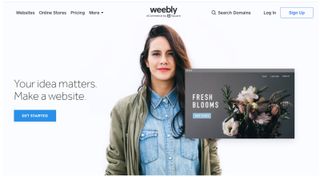Brian LeRoux: Hi Lyza! Tell us about yourself.
Lyza Danger Gardner: I am a dev, born, raised and resident in Portland, Oregon. I've been doing web stuff since the mid-90s and co-founded Cloud Four in 2007 with three savvy folks. We obsess over the mobile web. I do two things. I do hands-on dev work: building mobile web stuff from both the back and frontends, helping out with building hybrid mobile native applications using PhoneGap. But I also like to teach other people about the mobile web by speaking, teaching and writing.
BLR: Did Cloud Four start out as a mobile consultancy?
LDG: We did start Cloud Four with a mobile web focus, way back in 2007. This was before the iPhone or apps. Mobile web was just getting beyond the whole WAP thing and it was an interesting time. But I would say the consultancy thing is something that developed over time — we're a bunch of doers at heart, but our interest in teaching and the community around us led somewhat naturally to that arm of our business.
BLR: What sorts of things make up a normal day for you?
LDG: It's a bit cliché, but I'd say I don't have a ‘typical day’, as such. Mobile and web technologies are moving so fast that one cannot become cemented in a routine. Sometimes I like to imagine my days as a series of quick shots in a B-movie montage. TUESDAY, it says at the bottom of the screen, and I have just finished giving an energising mobile web workshop in New York (well, energising to me; I can only hope the same for the attendees) and I'm once again stuck in JFK's terrible Terminal 3. WEDNESDAY: I'm deeply researching WebRTC and doing something clever with CSS transforms for a customer application. Then again, it may be THURSDAY and I'm debugging character encoding or events that aren't firing in the Android browser or putting together IKEA furniture or administering a furious hack to get something really basic to work in a form in the Drupal web framework. That's less hot. But it's all part of the adventure, yes?
BLR: Head First Mobile is an ambitious project given the sheer size of mobile. How did you decide what to cover and what isn't crucial for people becoming acquainted with the medium?
LDG: You’ve hit upon the most challenging part of my job: throwing a lasso, somehow, around the immense topic that is ‘the mobile web’. I'm not always successful! With respect to HFMW, I have to first tip my hat to my editor, Courtney Nash, who is fantastic, and other smart people at O'Reilly. There's also the research and design of the series itself, which is at the heart of its success.
Like other Head First books, we told this one like a practical, but adventuresome, story. Assuming you're relatively web-savvy, what would be the most direct, bang-for-buck way to wade out into that complex pan-device space without immediately drowning? Things start falling into place when you think of the whole thing as a narrative. I think it surprised us at the time that responsive design ended up at the beginning, and I ended up making the decision in the middle of the book to go with a framework — jQuery Mobile, at that time in a pre-1.0 state — instead of diving into the nuts and bolts of various APIs. The topics unspooled as we walked through them as someone new to the mobile web might encounter them.
BLR: You were among the characters that coined the term Future Friendly. What does it mean to you?
LDG: I think its inception came about as a conscious rejection of some of the semantic baggage of "future proofing" things, which asserts a slightly-arrogant sense of control that we never had over the web, and is even more illusory as we move forward. But, more than that, it's an overwhelmingly optimistic way of looking at the complex situation, of working together on some common themes to help influence the pan-device web — its standards, strengths and implementation — in awesome ways for the future. It kind of gets everyone together on the same, positive team, ready to face the challenges ahead.
BLR: What devices are you personally rocking these days? What do you test/work with?
LDG: So here's a secret. I'm not really that into hardware in my personal life. I know. But I'm more about software, and I don't have a lot of extra time to get hobby-like on devices, so I tend to gravitate toward — yes, I know, so boring — the iOS ecosystem. In general, I'm much more likely to get excited about how fantastic Google Translate's interface is on my phone or the performance of its native browser than I am about its hardware guts.
That being said, that's my personal American persona. As soon as I'm abroad, I'm all about unlocked hardware (ps I really like the Nexus 4) and getting access to the web in general (I own a Huawei Mi-Fi for getting mobile Wi-Fi in Europe). And in that travel realm I suddenly really care about carrier network performance and optimised sites.
And then there's work. I'm lucky to be sat in the same physical room as the Mobile Portland device lab, where we have a community collection of many dozens of devices. So I am constantly testing with something different and often surrounded by a pile of hardware.
Portland has always struck me as the dark horse of mobile development activity. We've always enjoyed going to Mobile Monday, and of course PhoneGap Day USA happens there. Urban Airship, Cloud Four, BankSimple, etc. What’s happening in your city these days that’s new and exciting?
I think Portland is just starting to get over itself slightly. It's been abuzz with that creative startup energy for a few years (with a pretty solid mobile contingent), and now it's starting to do some self-reflection and steer slightly away from some of its own caricatures. Portlandia, anyone? But seriously, I'm starting to see slightly less self-consciousness in the dev community, a bit less need to prove that one's current project is really hip. Less kale and fewer backyard chickens, more "how can I build something that will do something neat?" The town definitely has its feet under it now. Also, there’s nothing wrong with kale or chickens in most contexts.
BLR: Over the years we've agonized together over the subtle pain of developing for the mobile web. Any favourite (READ: most despised) hacks you have to employ these days?
LDG: I think we're turning this corner where we're no longer seeing those late-night, crazy-town, diving save hacks for a specific device or browser as personal, creative victories, but things to shake our heads at collectively. I am starting to eschew, for example, particularly complex polyfills in favour of cleaner, if more brutal, progressive enhancement. Your flavour of device and browser doesn't support the W3C-specc'ed History API? Fine. You get full request page loads, not a clever workaround.
The mobile web breaks a lot. We've all seen that. But the thing is: so much of its breakage we bring upon ourselves. Every trick we introduce brings risk with it. So these days I'm trying to build a leaner and cleaner picture. Granted, this idealism can only go so far in the face of reality and customer needs, but it's a different perspective, at least.
BLR: Tell us about your tools and development workflow.
LDG: Sublime Text, browser, Web Inspector, rinse, repeat. Pre-processors (SCSS, CoffeeScript). Build scripts. Git. Email. Stack Overflow. Cheez-its. WEINRE, Charles Proxy, Adobe Edge Inspect. Anger. W3C specs. Twitter. JS framework of the moment. Rejection of JS framework of the moment. Realising I suck at JS. Sleep. Merge conflict. Reload. Cached stylesheets.
BLR: Besides being a crazy person doing mobile web development on old school Blackberry, why is your middle name Danger?
LDG: Actually, I did that to myself after self-imposing a mandatory two-year waiting period after coming up with the idea, which I hatched after realising my full name at the time (Lyza Anne Gardner) sounded kind of ridiculous. I did it officially in Multnomah County court and posted notice for thirty days. I think I was 22. If I did it again, I'd change it to "Dangerr" because then it would be a perfect anagram of my last name.




